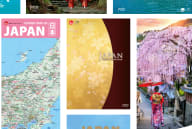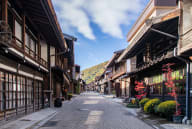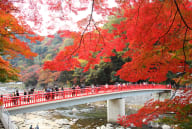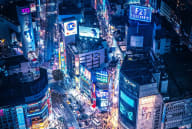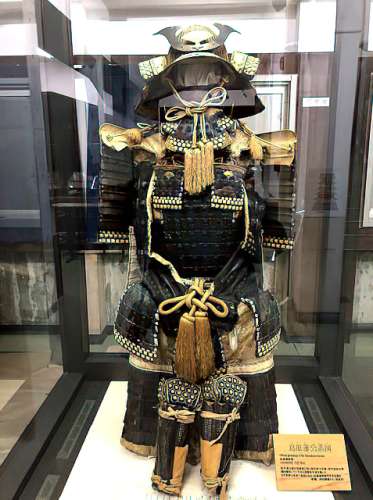
My friend and I spent a near-perfect day in Shimabara City that included many of our favourite Japan-destination activities: history, samurai, castles, mountain vistas, onsen, sake, food, and conversations with locals.
We started the day at Kumamoto Port in Kumamoto Prefecture, Kyushu, where we boarded the Kyusho Ferry for the one-hour crossing of the Ariake Sea, to Shimabara, a city in Nagasaki Prefecture. Flocks of seagulls flew alongside the ferry and in turn, many passengers flocked to the snack bar to purchase kamome pan, seagull-friendly bread, to feed the birds by hand or throw pieces out to birds on the wing. But once the feeding frenzy subsided, impressive views of Mt. Unzen, a group of active volcanoes towering over the Shimabara peninsula, dominated the horizon.
We docked at Shimabara port, by the train station, and easily walked to our hotel, Ryokan Kaibosou. This was a very friendly inn with large tatami rooms, comfortably futon beds, dreamy views of the mountains, and an onsen, or hot spring, for getting into that totally relaxed mood.

We hopped on a local bus to the area around Shimabara Castle, where we had the local speciality, Guzoni, at Himematsuya restaurant. The story of this soup dish dates back to the Shimabara Rebellion in 1637 when the castle was under siege. The rebels combined mochi (glutinous rice cakes) with ingredients that were readily available from the sea and the mountains, and called the dish Ozoni. Fast forward to 1813 when a local chef recreated the soup with thirteen ingredients that included the city’s renowned spring water, bonito broth, burdock, chicken, and eel. He added “Gu” (‘solid ingredients’) to the name, and Guzoni was born. The current owners of Himematsuya are descended from that 1813 chef. Guzoni is a delicious, warming soup, full of umami and mouth-feel.
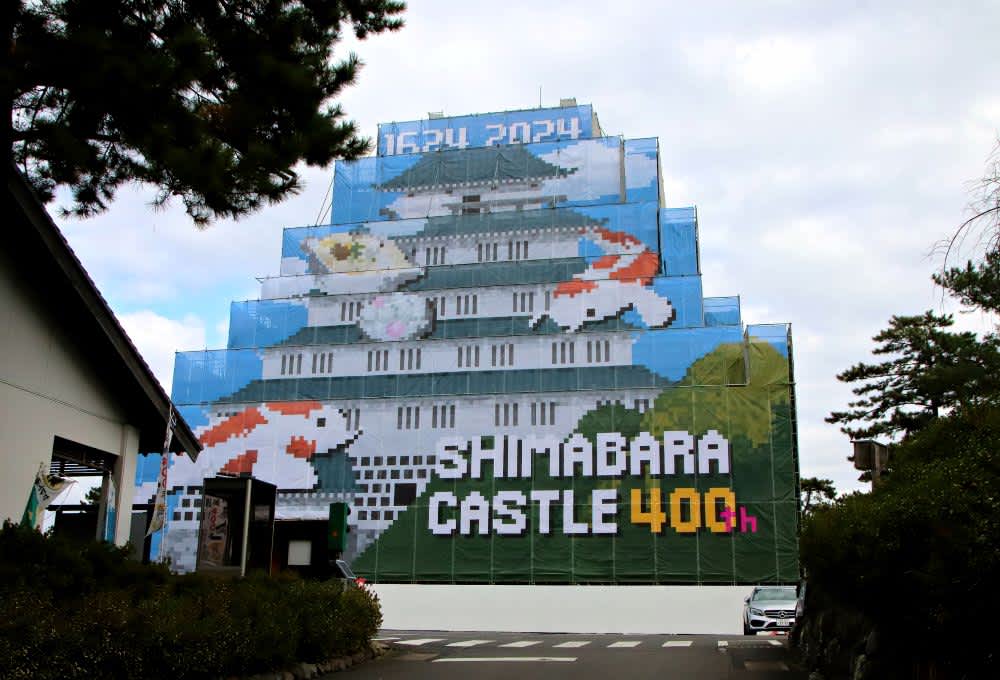
However, Shimabara Castle was beckoning. The beautiful white five-story structure was under construction and covered by a large screen announcing the castle’s 400th anniversary in 2024. Still, three floors of the building were open and well worth the visit. The exhibits included the history of Christianity in Japan, the banning of the religion in the 17th century, and the persecution of the Christians in the area, many of whom were thrown into the scalding waters of the Unzen hot spring.
But in addition, the collection of Samurai armour on display was outstanding, particularly the detailed craftsmanship of the helmets (kabuto), body armour (dou), and the weapons used, principally, the katana, or Japanese sword.
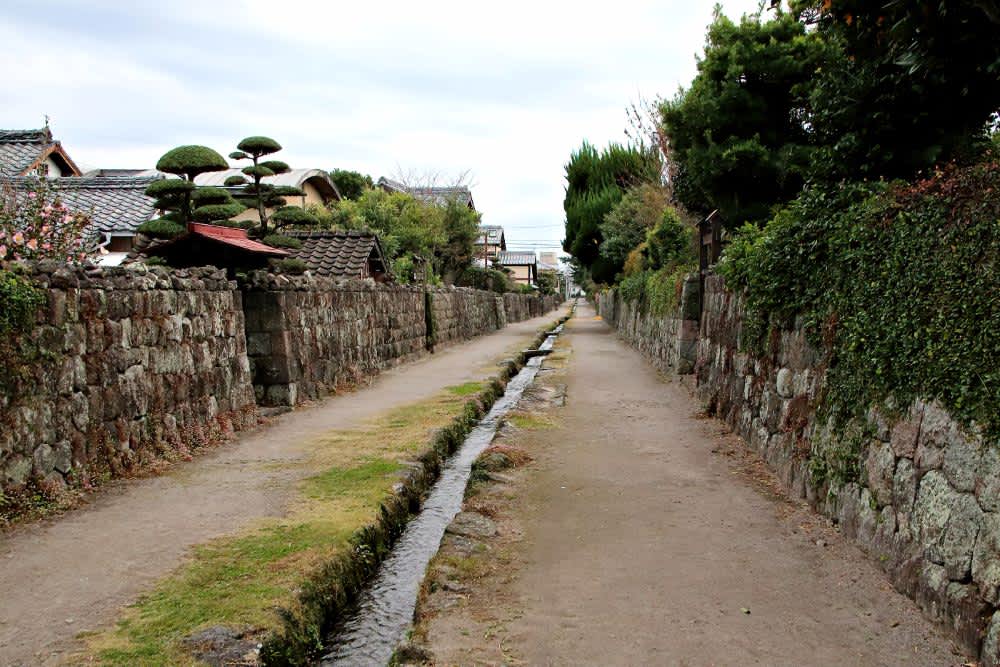
More insight into the life of the Samurai can be appreciated in Teppo-Cho (Gun Town), a district beside the Castle. A canal runs down the middle of the narrow street, carrying fresh spring water (the nickname of Shimabara is “the City of Water”). And with the smell of persimmon and orange trees in the air, visitors are able to explore three Samurai residences. The roofs, gardens, interior layout, kitchen and the carved wooden ‘ranma’ or transoms, are fascinating.
While we arrived at the Yamasaki Sake Brewery too late for a visit, we were able to enjoy the dry, clear beverage with our dinner at Izakaya Sakura. The incredibly delicious meal included shirako ponzu: warm cod milt in ponzu sauce with pepper, onions and yuzu kosho – a hot, citrus-based spice. This was followed by assorted sashimi, ankimo (monkfish liver), and fugu yubiki (boiled pufferfish with garlic and onion).
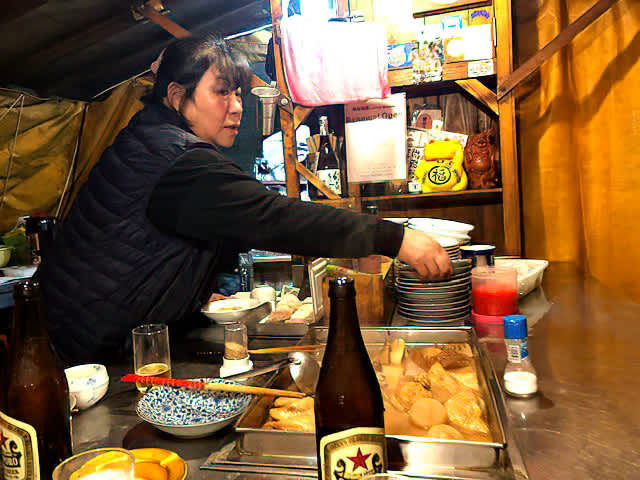
And just when we were ready to head back to the hotel, one of the patrons invited us to Yatai Marufuku, a small tent-restaurant nearby. Oden is the specialty: a delicious stew of boiled eggs, daikon, konjac and fish cakes in a soy/dashi broth. This was accompanied by Yakitori: skewers of pork, beef and chicken skin, along with drinks of sake, homemade shochu, and beer. It turned into a memorable evening of conversation and laughter with the owner, Takami Matsumoto, and her family.
Our time in Shimabara was short, as we had a busy travel schedule ahead of us, but the memories of our visit, from start to end, with strong history, culinary and people highlights, will be the magnet that brings us back to explore more of the city and the peninsula, as soon as possible.
https://www.discover-nagasaki.com/en
*The renovation of Shimabara Castle is completed.
About the writer
Steve Gillick has been involved in the Canadian travel industry for over 40 years in various roles, including tour guide, tour operator, President of the Canadian Institute of Travel Counsellors, travel writer, and author. He has explored 85 countries and territories, with 20 journeys to Japan and 60 published articles about the country. Steve is the President of Talking Travel, a consultancy specializing in skill development, association management, travel writing, and destination presentations.
The opinions expressed in the above article do not reflect the views of JNTO. All content and images are property of the writer unless otherwise specified.



























































